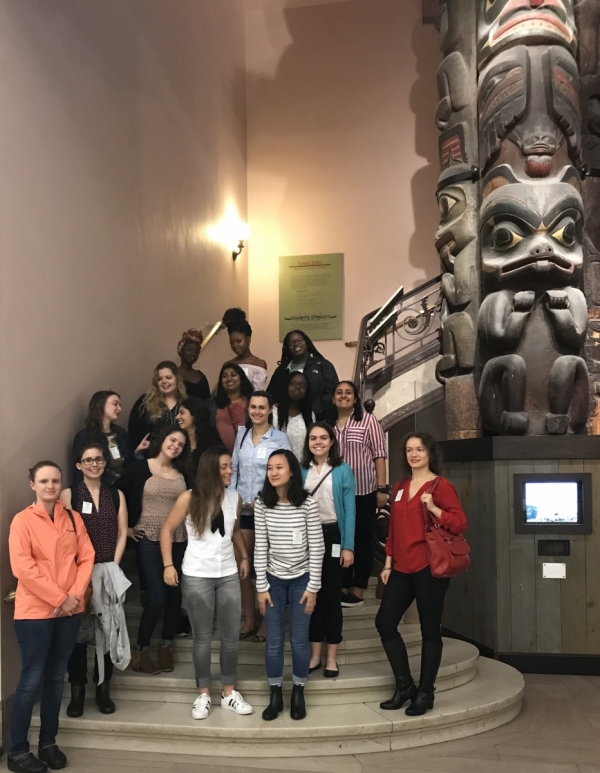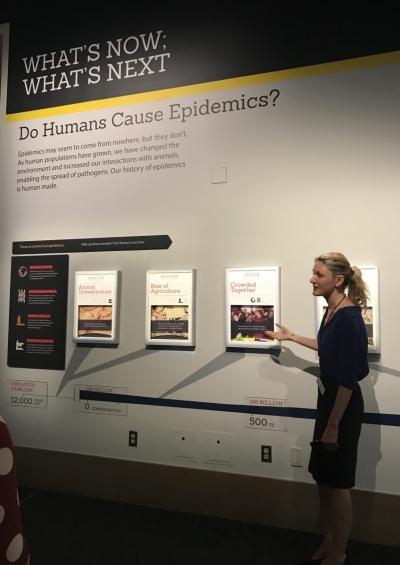"For symposium on October 11, the SHM cohort braved the pouring rain to fulfill every 2000s kid’s dream: a reenactment of Night at the Museum. Escorted by biological anthropologist and museum curator Dr. Sabrina Sholts, the cohort made up most of a group that was able to see the new exhibit Outbreak: Epidemics in a Connected World at the National Museum of Natural History after-hours. The exhibit informs museum-goers about the elements of an epidemic, including where they start, how they spread, and how to help prevent them using information from past epidemics (especially fitting as this year marks the centennial of the 1918 influenza pandemic). With the world being increasingly connected, diseases can spread a lot faster and farther than ever before. For example, humans have known about Ebola for years but a vaccine was only recently developed because it’s only affected small populations before; in the last epidemic, it spread into a major city for the first time. Not only were we able to see the exhibit at night, but Dr. Sholts curated the exhibit and was able to tell us everything about it, offering expertise not only on the subject matter presented but on the creation of Outbreak as well. Unfortunately, we didn’t get the full experience (all the interactive screens with videos and games were turned off) but it was still absolutely incredible.
Dr. Sabrina Sholts discusses the role humans play in the spread of disease.
{C}{C}{C}{C}{C}{C}
Perhaps the best part of the evening wasn’t seeing the exhibit itself but being able to go behind the scenes into the anthropology department itself (you haven’t felt cool until you walk past a “staff only” sign in a museum at night, believe me). We walked up a flight of stairs, past a few specimens that aren’t seen by the general public, and into a seminar room. There, Dr. Sholts presented a brief PowerPoint on her unique career path and the making of Outbreak, as well as where it’s going. As it turns out, the National Museum of Natural History isn’t the only host for the exhibit: there’s a DIY version that the Museum has spread all over the world, translating it into several different languages and offering templates and tips on setting it up. She also offered some insight into what it’s like working for a museum, which is an alternative option for a career in academia, instead of just the classic professor/researcher. After the presentation, Dr. Sholts took questions from the audience, and SHM took advantage of this opportunity, asking questions about the exhibit, Dr. Sholts’ career, and everything in between. Finally, at 7:30, we filed out of the room, back into the lobby, and headed back out into the rain. It was an incredible evening in the National Museum of Natural History with a remarkable woman in science. Events like this are truly the reason we came to DC, and why being a part of the WLP is such an amazing opportunity."
Alysa Rogers, SHM 2018-19
Dr. Sabrina Sholts explains the concept of One Health- that human, animal, and environmental health are not separate ideas, but are intimately connected and constantly influences one another.
{C}{C}{C}{C}{C}{C}




